One of the most fascinating sculptures in the oeuvre of Antonio Canova depicts the sister of one of the most famous people in French history, Napoleon Bonaparte.
In this article, we’ll take a closer look at some of the most interesting facts about Venus Victrix, a remarkable work of art created by one of the most famous Neoclassical artists in history.
1. It depicts Napoleon’s sister named Pauline Bonaparte
Venus Victrix is one of the most fascinating sculptures created by Antonio Canova (1757-1822), one of the most renowned Neoclassical artists in history. It depicts Pauline Bonaparte (1780-1825), the little sister of French political and military leader Napoleon Bonaparte (1769-1821).
She was born as Maria Paola Buonaparte in Ajaccio, the largest city on the island of Corsica, an island in the Mediterranean Sea that is part of France. She was the daughter of Carlo Buonaparte who was the representative of Corsica to King Louis XVI.
She held quite a few titles in her life as well, including those of imperial French princess, the princess consort of Sulmona and Rossano, and the first sovereign Duchess of Guastalla in Italy.

2. The sculpture was commissioned by her second husband
As the sister of the most powerful man in France in the early 19th century, she had a lot of contacts. Pauline Bonaparte was also notorious for her promiscuous nature, even though she got married to her first husband, French general Charles Leclerc, on June 14, 1797.
This marriage ended when her husband passed away in 1802 after falling ill in Saint-Domingue in the West Indies. She didn’t waste a lot of time and married into the powerful Borghese family as she married Camillo Borghese in 1803.
It’s Camillo who commissioned the sculpture for his wife just a few years later. By this time, Canova, who had arrived in Rome from Venice in 1780, was already one of the most celebrated artists in Europe, receiving commissions from all across the continent.
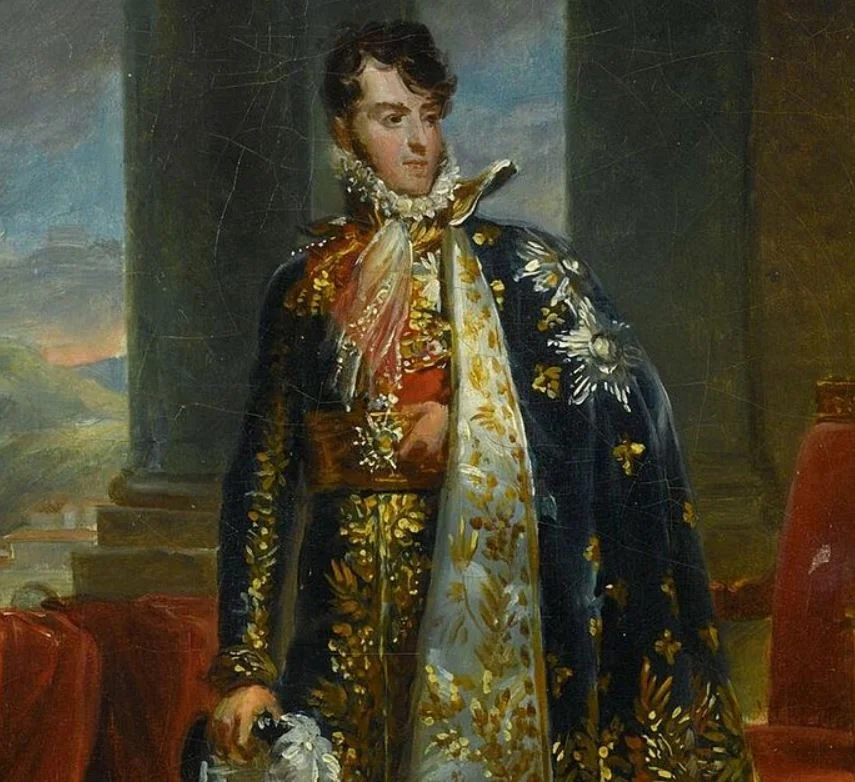
3. It was created in the early 19th century and is life-sized
The sculpture depicts Pauline as she is lying on a couch in a reclining position, a typical position in classical works of ancient Rome. The work is life-sized and has dimensions of 160 x 192 centimeters (63 x 75 inches).

It took the artist 3 years to complete this magnificent work as he sculpted it between 1805 and 1808. Following its completion, it was moved to Camillo’s house in Turin in northern Italy.
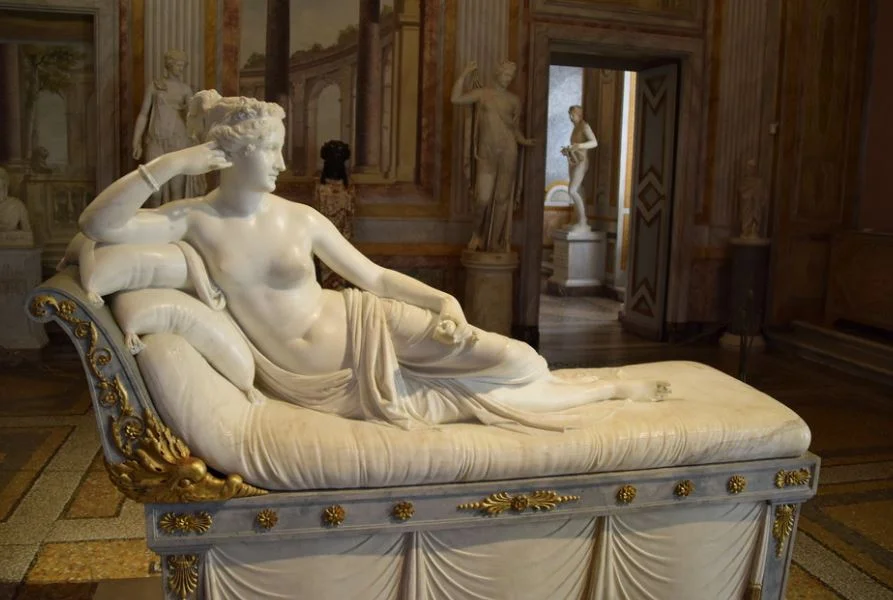
4. It was probably inspired by a famous ancient sculpture
One of the most remarkable facts about Venus Victrix by Canova is that it was most probably inspired by another work part of the Borghese collection at the time, a work called “The Sleeping Hermaphroditus.”
This sculpture depicting a sleeping woman was created in ancient times as it was unearthed near the Baths of Diocletian in Rome. It was then instantly claimed by Cardinal Scipione Borghese for his collection in the early 17th century. The mattress was sculpted by renowned Baroque artist Gian Lorenzo Bernini.
This sculpture ended up being sold to France by Camillo Borghese and is now on public display at the Louvre Museum in Paris.
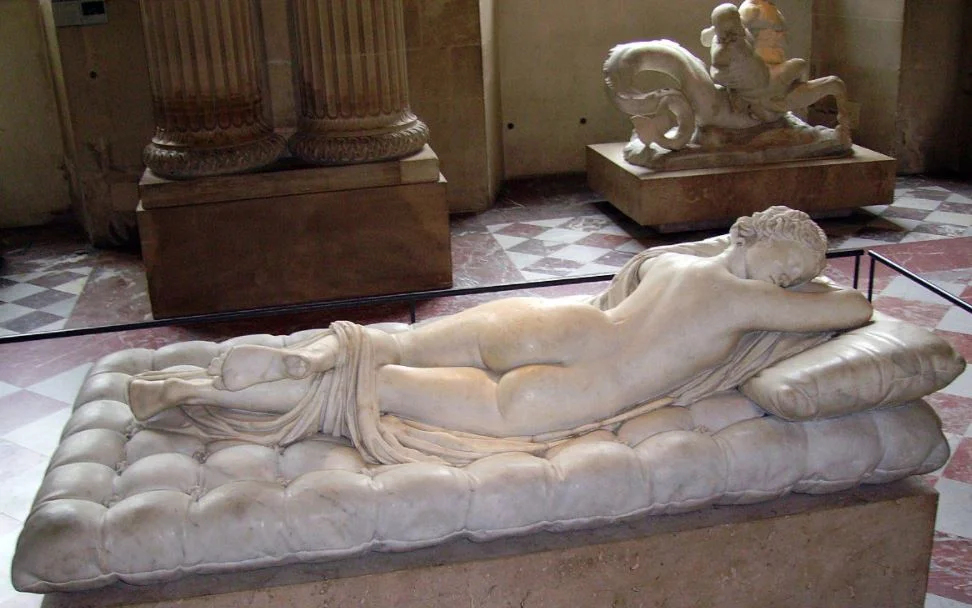
5. The apple relates to a story from Greek Mythology
The idea behind the sculpture is the same as many sculptures in classical art which is to depict a mortal individual as a god, in this case, Venus Victorious.
This is emphasized by the fact that she is holding an apple, a reference to the judgment of Paris, a story from Greek Mythology in which Paris judges her to be the fairest among her, Minerva, and Juno, and she is awarded the “Golden Apple of Discord.”
In the story, which can be described as the original beauty contest, she is not the fairest at all but rather manages to convince Paris to pick her because of her sexual charm, most certainly a reference to the real nature of Pauline Bonaparte.
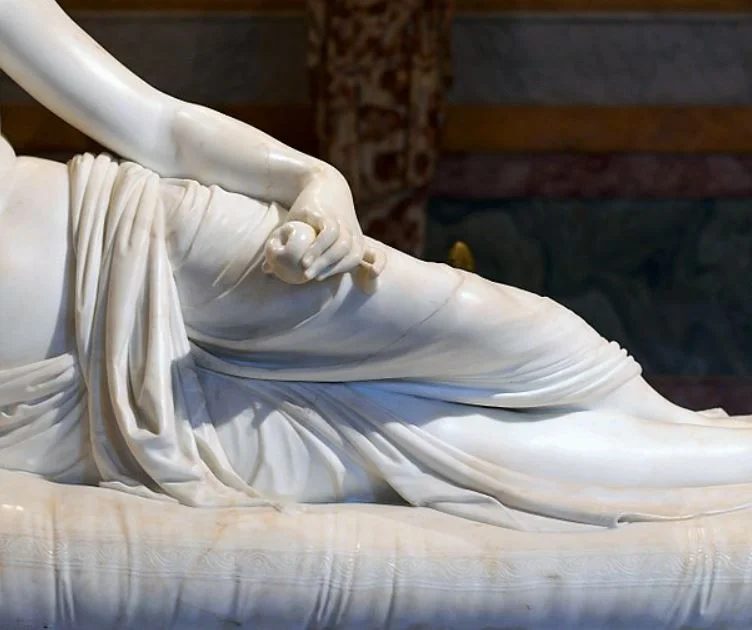
6. It’s unsure whether or not Pauline posed naked for the sculpture
According to Pauline Bonaparte, she clearly posed semi-naked for the portrait. She even mentioned that she wasn’t able to post with her clothes on because the room was too hot for that.
Not all art historians are too sure about this fact though, as she wasn’t the woman to avoid a scandal or two. And these statements would definitely have caused a little stir in society back then.
Regardless, she was now Pauline Borghese and these people actually believed that they were descendants of the founder of Rome named Aeneas, who himself was believed to be the son of Venus. Because of this, they surely would have accepted the fact that she posed naked for this wonderful sculpture.
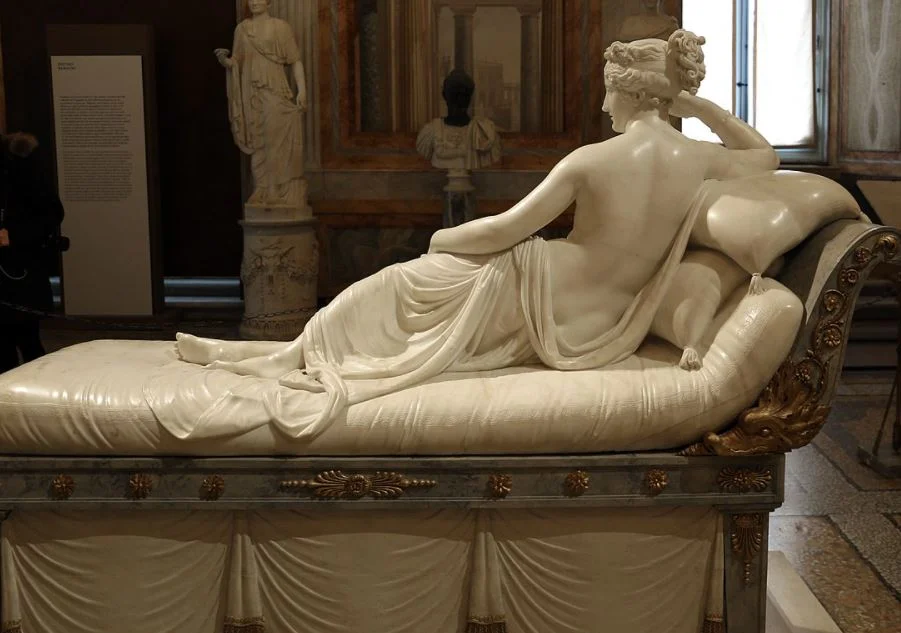
7. It wasn’t the first time that Canova sculpted a naked Bonaparte
Whenever an important member of society was depicted naked, he was virtually always covered with some sort of drapery to avoid a huge scandal. This makes it all the most remarkable that Venus Victrix wasn’t the only member of the Bonaparte family that he sculpted naked.
Just after he started working on Pauline’s sculpture, he completed the naked image of her famous older brother, Napoleon Bonaparte. This sculpture is called “Napoleon as Mars the Peacemaker” and was completed in the year 1806.
Unfortunately, Napoleon didn’t like it when he first laid his eyes upon it in April 1811 and banned it from public view. It eventually ended up in the city of London and has decorated the Duke of Wellington’s residence in the city called the Apsley House ever since 1816.

8. It could originally be viewed from all angles without moving
Another one of those fascinating facts about Venus Victrix by Canova is that it was originally intended to be viewed from all angles without the viewer having to move at all.
The wooden base of the sculpture had a mechanism attached to it that allowed it to be rotated. This way it could be observed from all angles without having to move an inch.
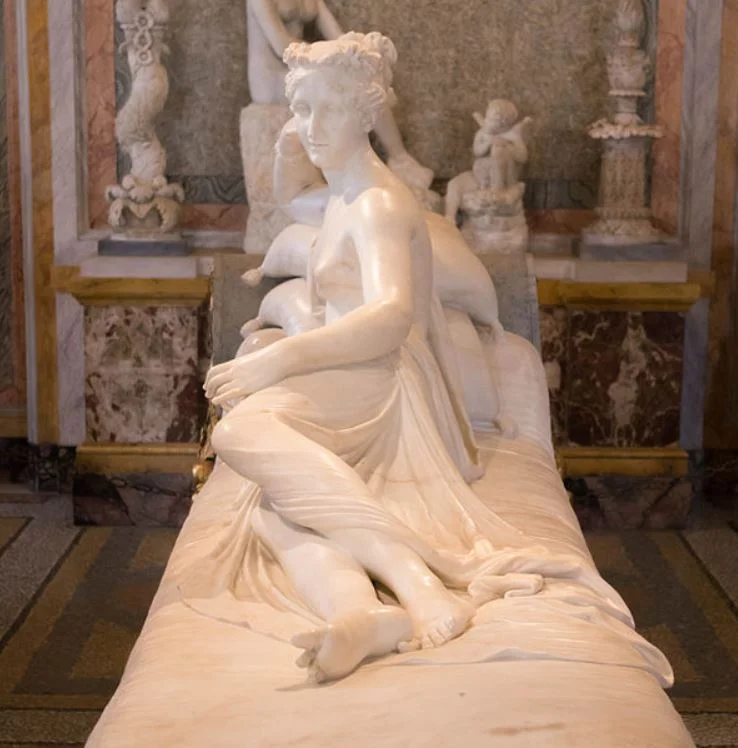
9. The original plaster cast is located in Canova’s hometown
As with most of Canova’s sculptures, there’s a plaster cast of this magnificent work of art as well. This cast can be found in the hometown of the artist, more specifically the Museo Canova in Possagno, in the province of Treviso in the Veneto region in northeastern Italy.
The plaster sculpture is located in the so-called Gipsoteca, a plaster cast gallery that features numerous works of the artist, including the lost George Washington sculpture that Canova completed in 1820.
If you do manage to make it to his hometown, make sure to visit the “Tempio Canoviano” as well. This Neoclassical building resembles the Pantheon in Rome and was completed between 1822 and 1830. The remains of the artist are buried here as well.

10. The marble sculpture can be admired in a famous museum in Rome
The original sculpture made of Carrara marble was moved several times following its completion in 1808. It first moved to the personal residence of Camillo Borghese in Turin, followed by another move to the Italian city of Genoa.
It arrived at its final destination, the Galleria Borghese in Rome, in the year 1838, and is still one of the major attractions of this popular museum in Rome today!

